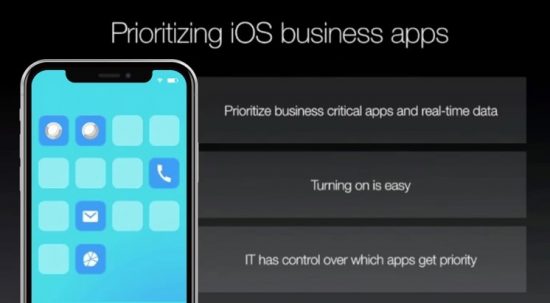































Apple|and|Cisco started partnering together - to facilitate the very best app experience for iPhone and iPad with Fast lane on corporate networks, Cisco DevNet opened a Fast lane Validation Lab for enterprise iOS developers and partners to help education on the design and build of business-critical apps, with a service to verify iOS app functionality on a Cisco infrastructure without having to spend thousands of dollars on a test bed. DevNet provides Cisco enterprise and cloud-managed Cisco Meraki infrastructure test beds for testing QoS tagging at no cost to developers! DevNet is working to expand the validation processes to include iOS 12, which now includes a total of 9 queues for Fast lane traffic flows, among other features.
In the past year, we met many iOS developers who wanted to get their applications 'Fast Lane Validated'. For iOS developers, Quality of Service (QoS) was known to be a network responsibility and not something with much developer focus from the iOS developer point of view. While educating and consulting with them, we showed them how the "user-experience" of their app can be enhanced by QoS tags right from their application. This was very well received and developers started to inquire more about the validation process.

Understanding the various application traffic types that each application generates is the key. When you mark your app flow with QoS, it receives the right priority as it gets down the network stack inside iOS, as well as the right priority over the air and finally across the network. As part of this interaction we also coded and released an application which showcases Fast lane working in real life. This demo is available for download and access can be requested on the DevNet Fast lane page.
Not all flows need prioritizing (or for that matter, de-prioritizing). In fact, each queue is tailored for a specific type of traffic and sending a flow to the wrong queue may lead to performance issues. iOS 12 now supports 9 queues. Among them, 4 are top of mind for most developers and previously available:
Those are the four main queues. There are five other queues, that are less common but definitely important in certain use cases. If you are unsure, use the 'BE' queue as a best practice. However, using the precise and correct marking may help your app flow get in the right priority queue in the overall traffic in the cell:

QoS on iOS uses industry standards. If you are unsure about your application traffic flow, use best effort. You can also consult RFC 4594, which provides guidance on what type of traffic should receive what type of QoS priority as well as https://www.ietf.org/id/draft-ietf-tsvwg-ieee-802-11-01.txt
Last year was all about learning from and educating partners and working alongside with them on their journey. We will continue to validate more applications in our DevNet's Fast Lane Validation Lab. For this year, Cisco DevNet is embarking on a newer journey with Fast lane given the new traffic types that are supported in iOS 12. We will continue to enhance our lab over the next few months that further enrich experiences for our developers and developers working with Apple products used in the enterprise domain.
Looking forward to working with you all in the Fast lane. Let DevNet help you make your apps Fast lane enabled!
We'd love to hear what you think. Ask a question or leave a comment below.
And stay connected with Cisco DevNet on social!
Twitter @CiscoDevNet | Facebook | LinkedIn
Visit the new Developer Video Channel
 Etiquetas calientes:
manzana
Cisco Meraki
Aplicaciones móviles
QoS
app developer
Apple iOS
mobile applications development
Etiquetas calientes:
manzana
Cisco Meraki
Aplicaciones móviles
QoS
app developer
Apple iOS
mobile applications development